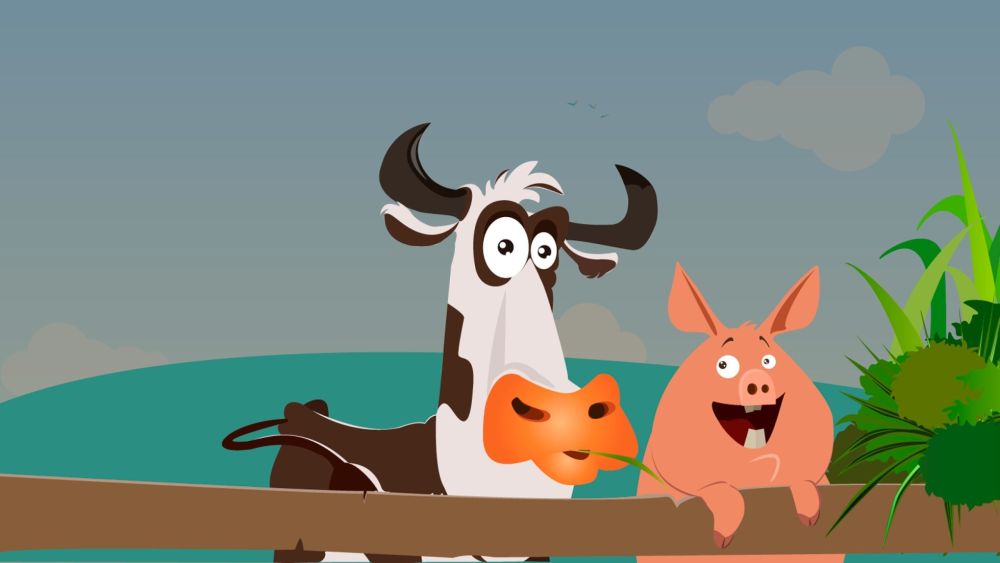The livestock market can be an incredibly profitable area; you can grow your portfolio and fatten up your returns by trading in futures and options. Here at fractalerts, we offer a livestock service which gives you trading alerts across Lean Hogs, Feeder Cattle and Live Cattle.
But are you sure you know the difference between Feeder Cattle and Live Cattle? And what on earth is a Lean Hog?
Here’s our easy introduction to the animals, so you’ll be better informed on your investments.
Lean Hogs
Okay, in short a lean hog is a pig. These animals have been breed in order to become tasty pulled pork, gammon and bacon. This is essentially their purpose, and we thank them for it. Because bacon is delicious.
Hogs are generally bred twice a year, in a continuous cycle which produces a steady flow of animals. With a short gestation period (3.5 months) and a high average litter size (9 pigs), hogs are prolific and relatively easy to breed.
At 3-4 weeks of age, the piglets are weaned off their mothers and set out on a course of weight gain specifically designed to fatten them up in a quick and efficient manner. And next step, bacon…
The time from birth to slaughter is typically 6 months. Hogs are ready for slaughter at about 250lbs, producing a dressed carcass weight of around 190lbs and an average 88lbs of lean meat.
The US produces 10% of the world’s pork, and the main states for production are Iowa, North Carolina, and Illinois. The state that consumes the most is Texas, which I’m sure makes the boss at fractalerts a very proud Texan.
When is a Cow a Cow?
And the only thing we like more than bacon, is a hamburger with bacon. So let’s use this opportunity to now talk about beef.
Before a calf can get with its herd and become Feeder or Live Cattle, some things have to happen. Firstly, it has got to be born, which traditionally occurs in spring. The average calf will weigh 70-90lbs at birth. The calf will then be weaned and sent out to graze for at least nine months to hit a minimum weight. Once this target is met (usually 600-800lbs, breed dependant), the animal is moved to a feedlot, and as if by magic becomes Feeder Cattle.
Chow Now Brown Cow
Now the cattle is on the feedlot, eating away, with a desired end goal of 1000-1300lbs – think The Biggest Loser in reverse. For the whole duration of this weight gain, which normally takes 3 to 4 months, the cattle remains Feeder Cattle.
In order to fatten up the Feeder Cattle the animals are going to be munching away, not on the rolling green hills and pasture, but on the energy dense corn feed that gets the job done much quicker. This not only means that the cow is ready for the final stage of this process sooner [read: hamburger], but that any shrewd investor should keep their eye on corn prices as it directly effects the Feeder Cow prices.
So when does Feeder Cattle become Live Cattle? Ironically, when it’s time to die.
No’ Mo’ Moo
Live Cattle are basically animals that are at their slaughter weight. They remain on the feedlot for up to 5 months, adding to that weight, until they weigh in at, on average, 1250lbs.
Feedlots then sell this cattle onto meat packers who will slaughter and package the animal cuts. Boxed beef cuts are where the majority of the value comes from, but the hide and bones can command a small price in certain secondary industries.
And it’s worth a mention that Nebraska and Texas are the biggest producers of beef, so keep your eye on the news and weather for these areas as this can influence the price.
What’s the Beef?
But whether you make the choice between pork or beef, you have to understand that the underlying supply and demand influences remain the same.
The factors among the supply side are the production cost, such as cost of feed and veterinary care. The factors on the demand side are personal income, price changes in alternative choices (chicken/pork/beef/lamb prices will all influence the consumer), and population increases.
And, one finally problem – disease. As you are investing in a sentient being you have to consider that there may be an event which, however unpredictable, swoops in and devastates your stock, whether that’s once in a lifetime BSE outbreaks or more frequent events such as Foot and Mouth or Swine Flu.
fractalerts and Farming
So you now know what you can trade on, but do you know when to train.
Here at fractalerts, we can provide information, strategy and trading tips on where to place your trades across the Lean Hog, Feeder Cattle and Live Cattle markets. These alerts are sent directly to your inbox ahead of the trade, and provide comprehensive information on where we are placing our investment. Because the one thing we like more than a double bacon hamburger, is putting our money where our mouth is – we make the same trades we advise you to place. And with a strategy that consistency out performs our competitors, we can all bring home the bacon. Mmmmm bacon.
-

The rhytm beneath the noise
-

You Don’t Need a Trading Style. You Need an Edge.
-

Consistency Isn’t the Goal—It’s the Outcome
-

What 2 Quadrillion Data Points Told Us
-

Math and Physics-Based Trading in Any Market Condition
-

Do not worry about anomalies
-

Consistency should not be the goal. Consistency should be the result.
-

Stop canceling fridays
-

The Elliott Wave Forecast is Subjective, Bias Driven And Backwards looking
-

Finding patterns in market data

